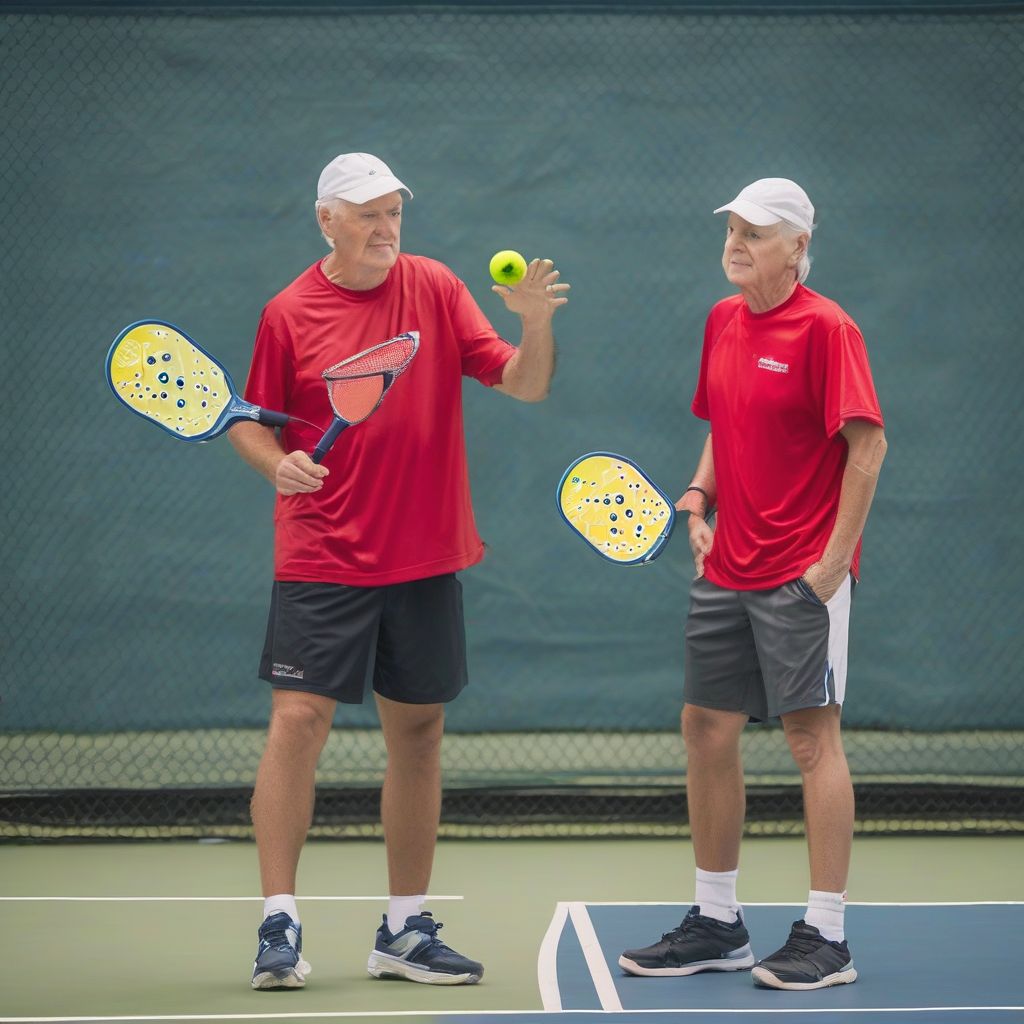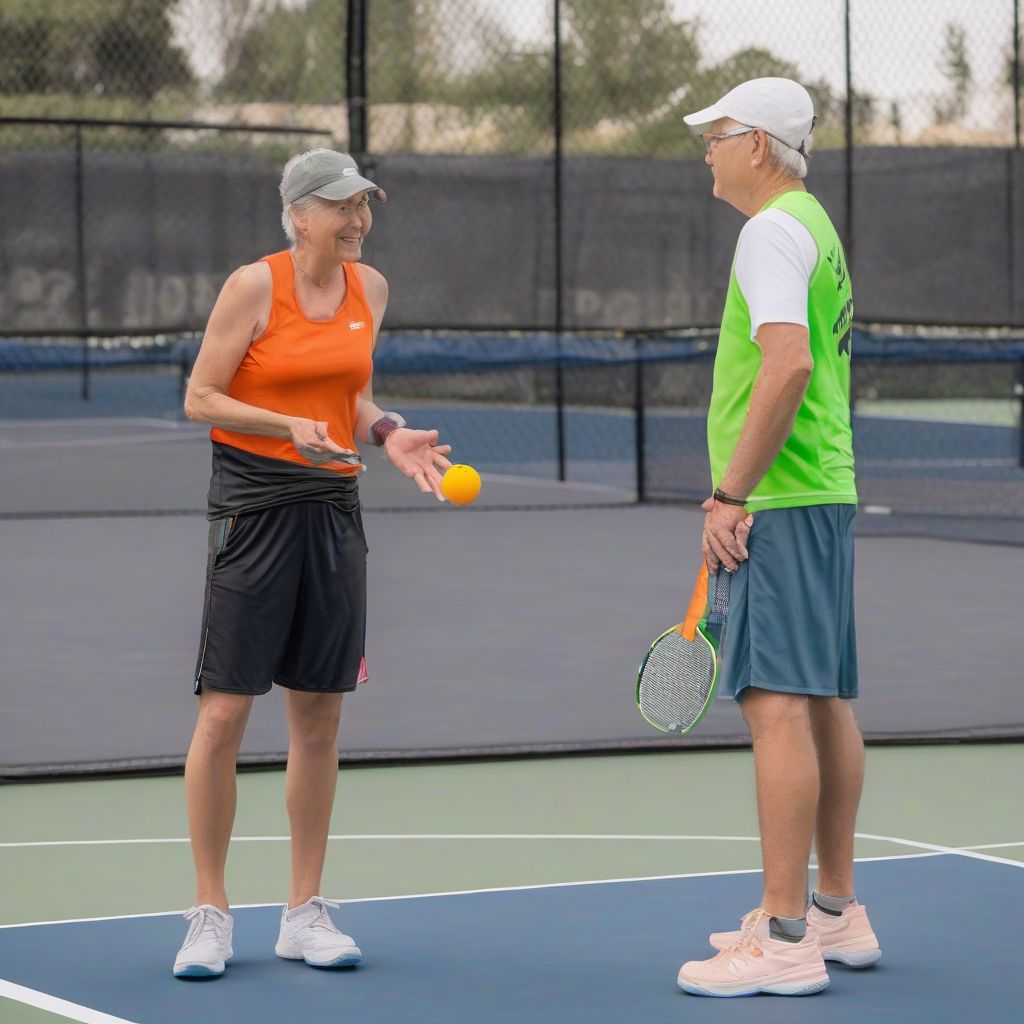Imagine this: You’re locked in a fierce pickleball rally, the score tied, sweat dripping, and your opponents just hit a tricky drop shot. Do you know where your partner is moving? Do they know what shot you’re going for? In the heat of the moment, spoken words often fail, and that’s where the magic of nonverbal communication takes over. It’s the unspoken language that separates the good pickleball doubles teams from the truly great.
Why is Communication in Pickleball Doubles So Crucial?
Pickleball doubles is a fast-paced, dynamic game where decisions are made in a split second. Unlike singles, you’re not just responsible for your own court coverage—you’re responsible for half the court, and seamless coordination with your partner is key.
Here’s why communication is paramount:
- Minimizes Errors: Clear communication reduces misunderstandings that lead to easy points for your opponents.
- Maximizes Efficiency: Knowing your partner’s next move allows for smoother transitions and better court positioning.
- Builds Trust and Confidence: When you can rely on your partner’s unspoken cues, it fosters trust and allows you to play more aggressively and decisively.
The ABCs of Pickleball Doubles Communication: Beyond Just Words
While a quick “yours!” or “mine!” can be helpful, effective communication in pickleball doubles goes far beyond the occasional shout. It’s about establishing a system of nonverbal cues that become second nature to you and your partner.
1. Visual Cues: Let Your Eyes Do the Talking
- Eye Contact: Before every point, make sure you and your partner briefly lock eyes. This silent agreement confirms you’re both ready and on the same page.
- Head Nods and Gestures: A simple nod or head movement can signal your intended direction or shot selection.
- Watching Your Partner’s Movement: Be aware of your partner’s positioning and anticipate their needs. Are they moving up? Backing up? This will give you clues about their shot and where you should be.
 Pickleball Doubles Eye Contact
Pickleball Doubles Eye Contact
2. Body Language: Speaking Volumes Without a Sound
- Paddle Position: The angle and height of your paddle can communicate your intentions to your partner. A high paddle signals readiness for an overhead, while a low paddle indicates a groundstroke.
- Court Positioning: Avoid bunching up! Maintain proper spacing and adjust your position based on your partner’s movements and the flow of the game.
- Energy and Body Language: A simple fist pump or positive shout can energize your partner and demonstrate your support, even after a mistake.
3. Pre-Point Planning: Laying the Foundation for Success
The most effective communication happens before you even step onto the court.
- Establish a Communication System: Decide on specific signals or calls for common situations, like poaching, switching sides, or dealing with lobs.
- Discuss Strategies and Tendencies: Talk about your strengths, weaknesses, and preferred playing styles. Does your partner excel at the net? Do they prefer to cover lobs? Understanding each other’s game will enhance your nonverbal communication during the game.
 Pickleball Doubles Strategy Discussion
Pickleball Doubles Strategy Discussion
Common Communication Pitfalls (And How to Avoid Them)
- Over-Communicating: Too much talking can be distracting. Focus on developing clear nonverbal cues to avoid information overload.
- Assuming, Not Confirming: Never assume your partner understands your intentions. Use visual cues and quick confirmations to ensure you’re both on the same page.
- Blaming Instead of Problem-Solving: Mistakes happen. Instead of assigning blame, use positive communication to analyze the error and find solutions for the next point.
Turning Silence into Success: Practice Makes Perfect
Mastering nonverbal communication in pickleball doubles takes time and dedicated practice.
- Dedicated Practice Sessions: Dedicate specific practice time to focus solely on communication drills.
- Open and Honest Feedback: After each point, take a moment to debrief with your partner. What went well? What could be improved?
- Observe the Pros: Watch professional pickleball doubles matches and pay attention to how the top players communicate with each other, even when they aren’t speaking.
Conclusion: Elevate Your Game Through the Power of Silent Understanding
Effective communication in pickleball doubles is the secret weapon that can transform your game. By mastering the art of nonverbal cues, pre-point planning, and positive reinforcement, you and your partner can move as one cohesive unit, anticipating each other’s moves and dominating the court. So, get out there, practice your silent communication, and watch your pickleball game reach new heights!
What are your favorite communication strategies for pickleball doubles? Share your tips and experiences in the comments below!
- Bond, Payton (Author)
- English (Publication Language)
- Baker, Joe (Author)
- English (Publication Language)
- Hall, Dennis (Author)
- English (Publication Language)
- Biff, Jaden (Author)
- English (Publication Language)
- Leach, Gale (Author)
- English (Publication Language)
- Callahan, John (Author)
- English (Publication Language)
- Carnot, Prem (Author)
- English (Publication Language)
- Moore, Daniel (Author)
- English (Publication Language)
- Jilson, Ben (Author)
- English (Publication Language)
- Hill, Cade (Author)
- English (Publication Language)








![Pickleball for Beginners: Level Up Your Game with 7 Secret Techniques to Outplay Friends and Ace the Court [III EDITION]](https://m.media-amazon.com/images/I/51la8IS6C4L._SL160_.jpg)

